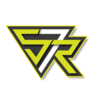-
HTML: HTML is a front-end programming
language that is
used to create web pages. HTML uses tags and attributes to specify how
text, images,
and other media are displayed on a webpage.
We will start with the basics of HTML, including
its syntax and structure. You will learn how to create web pages, add
images, links,
and format text using HTML.
-
CSS: CSS is a front-end coding language that
is used to
define the style and layout of web pages.
& you will learn how to style your
HTML pages using CSS. You will learn how to create layouts, change
fonts, colors,
and backgrounds. We will also cover advanced topics like CSS animations
and
responsive design.
-
JavaScript: JavaScript is a programming
language used to
add interactivity to web pages. It allows developers to create dynamic
and
interactive web content that can respond to user actions and input.
We will cover variables, functions, loops, and
conditional statements. You will learn how to manipulate the DOM and
create dynamic
web pages.
-
jQuery: This section will focus on jQuery, a
popular
JavaScript library that simplifies DOM manipulation and event handling.
You will
learn how to use jQuery to create animations, handle user input, and
make AJAX
requests.
-
REACT.JS: React is the open-source technology, which
was developed by Facebook, enables developers to create reusable UI components
that can be seamlessly combined to create complex and interactive applications
with ease.
-
VUE JS: Vue is a JavaScript library that is used for
building user interfaces (UIs) and single-page applications.
-
ANGULAR JS: Angular provides developers with
powerful features such as dependency injection, two-way data binding, and an
extensive library of tools.
-
BOOTSTRAP: Bootstrap is a free and open-source CSS
framework directed at responsive, mobile-first front-end web development.
-
PHP: In this section, we will introduce PHP,
a
server-side scripting language that is widely used to build dynamic
websites. You
will learn how to create forms, handle user input, and interact with
databases using
PHP.
-
PYTHON: In this section, Python is a popular
general-purpose programming language that can be used for a wide variety
of
applications.
-
NODE.JS: Node.js is an open-source, cross-platform
JavaScript runtime environment and library for running web applications outside
the client's browser.
-
JAVA: Java is a multi-platform, object-oriented, and
network-centric language that can be used as a platform in itself.
-
EXPRESS.JS: Node.js is an open-source,
cross-platform JavaScript runtime environment and library for running web
applications outside the client's browser.
-
MySQL: We will cover MySQL, a popular
open-source
relational database management system. You will learn how to create and
manage
databases, tables, and queries. We will also cover advanced topics like
indexes,
views, and transactions.
-
MongoDB: This section will focus on MongoDB,
a popular
NoSQL database that uses JSON-like documents instead of tables. You will
learn how
to create and manage databases, collections, and documents. We will also
cover
advanced topics like aggregation, indexing, and sharding.
-
Oracle: Oracle SQL Development is a free graphical
tool that enhances productivity and simplifies database development tasks.
-
API: You will learn about RESTful APIs and
how to use
them to interact with web services. We will cover HTTP requests,
responses, and
status codes.





